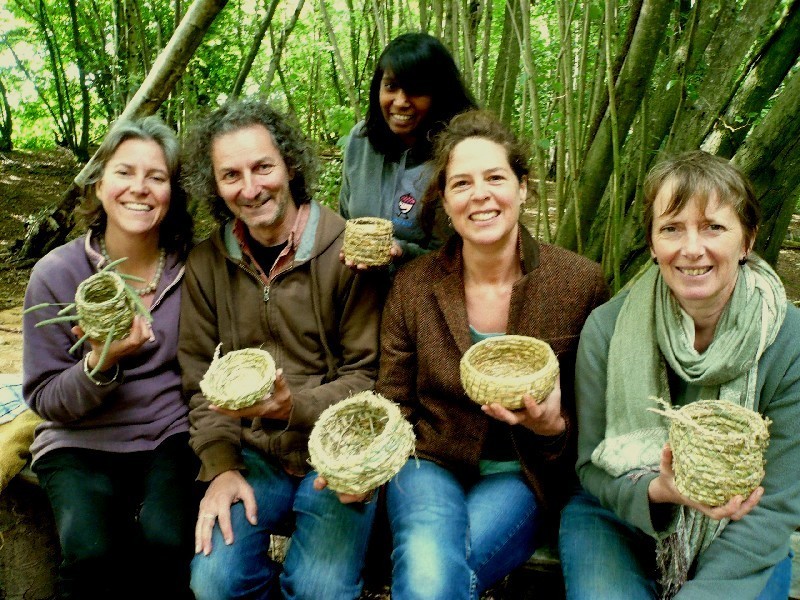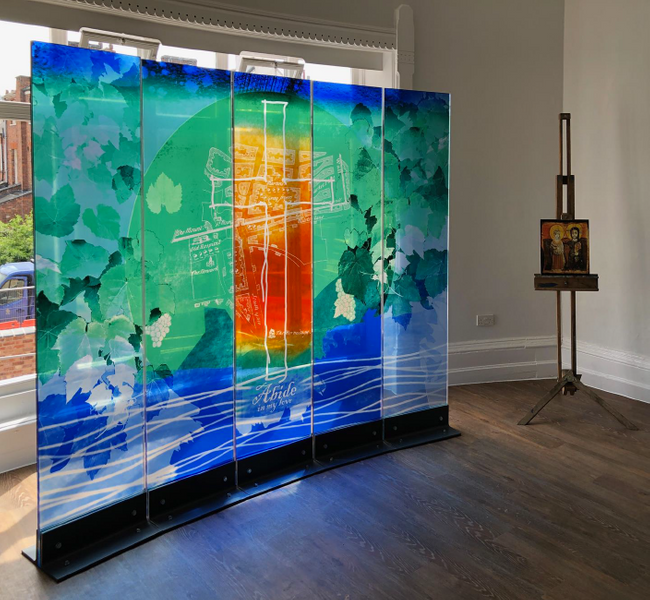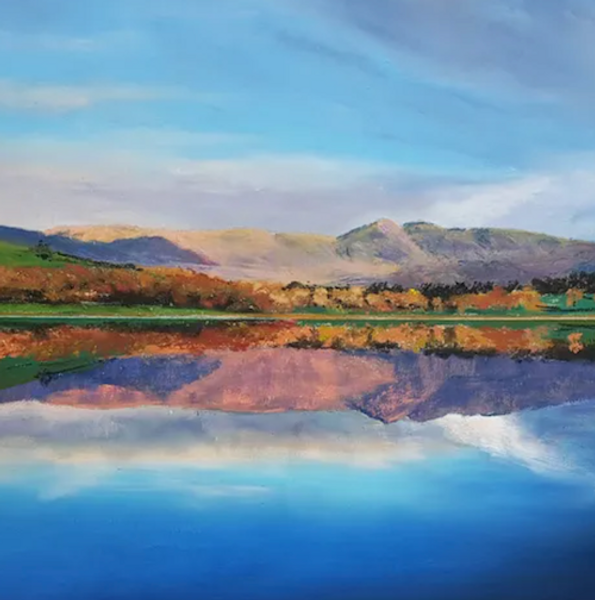Ruby Taylor of Native Hands offers a back to nature crafting experience, whether it’s fashioning a pot from hand dug clay, learning bushcraft skills or weaving a basket from foraged plants. We spoke to her about experimental archaeology, when bark acts like leather, and keeping traditional skills alive.
Certain crafts such as weaving, basketry and pottery go back to humanity’s very beginnings, where each region developed techniques and practices using local materials. Many of these traditional skills that were passed down and perfected through the generations now survive thanks to committed creative tutors willing to explore the history of their craft and transmit their learnings. Experimental or experiential archaeology is one branch of this movement, where we seek to understand the past by using the same tools and techniques as our ancient ancestors.

Your courses allow people to get out into the woods, and experience creating in nature. What sort of students tend to come and what do they get out of it?
These courses really are for everyone! People with an interest or background in archaeology often attend one of my workshops fo the hands-on experience of how our distant ancestors made these crafts. Others because they are really interested in foraging and want to make baskets for their foraging excursions. Many attend as they need time away from a stressful life, for the benefits to mental wellbeing or for quality time with loved ones. I design my courses to be accessible to beginners, but also interesting and challenging to people who like making things.
My students come away with new skills for life. The satisfaction of making a useful and beautiful basket/pot or learning a new bushcraft skill. An appreciation of how common plants can be used for crafts, which helps them see the landscape, hedgerow and their garden/allotment in a new light. But also a deeper connection with the natural world and a respect for the knowledge and skills of our distant ancestors, knowing that they themselves are now part of keeping alive a heritage of making.
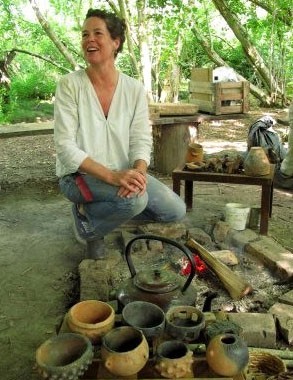
How did you get involved in teaching this sort of craft activity? Who taught you the skills?
I’ve always been a maker. I studied crafts at art college and dreamed then of making pottery in the woods but didn’t know how. When I had health issues in my early 30s, I left my art and design teaching job in a secondary school in Brighton and took a year out to live in a remote retreat community. I started experimenting with using found natural materials, making sculptures and installations; and the silent contemplative practices supported me in developing a much deeper connection to the natural world.
Later I joined a team of archaeologists doing experimental archaeology and teaching ancient crafts and technologies (mostly pre Roman). I learned a lot there, about sourcing our own materials as our Stone Age ancestors would have had to, and lots of amazing technical skills like building prehistoric style dwellings, thatching, wattle and daub, green woodworking, natural dyeing, ancient pottery and weaving. It inspired me to seek out formal basketry training (at the City Lit in London and also with a number of basketmakers local to me in East Sussex) and to do a lot of my own research and experimentation. I’ve always had a love of plants so was able to draw on that knowledge and develop it. It’s a continual learning process.
It’s really unusual to use such a wide range of wild plants for basketry. What characteristics do you look for when selecting your materials?
If it’s for weaving, it needs to be long and strong and pliable. But different basketry techniques need different things from the material… so in fact you start with a material and work out which technique it suits. It’s how basketry evolved, and it’s what determines the basketry tradition of any given place. People make the style of baskets that can be made from the type of material that grow there. Here in the UK there are long traditions of willow, rush and split wood basketry because those materials are widespread and also possible to manage/cultivate. But lots of other plants with similar properties can be used.
There’s always a lot of trial and error with trying a new material… you have to really get to know its characteristics. It’s a dialogue of understanding that you have to develop. Plant materials always vary from year to year depending on weather and soil conditions. You have to be responsive to that. It’s an ongoing dialogue. One of the things that took a long time to learn was how to prep the materials, how much each one needs to be dampened beforehand to make it workable. In my early days of experimenting I ended up with a lot of loose and saggy baskets! When I first worked with fresh bark I was really surprised how beautifully it handled, like soft damp leather. And then it dries nearly as hard as wood.
 Foraging for bulrushes
Foraging for bulrushes
 Wild rose: very strong and flexible for basket making
Wild rose: very strong and flexible for basket making
 Rush/reed mace: long, strong and versatile for all types of basketry
Rush/reed mace: long, strong and versatile for all types of basketry
 Brambles: easily foraged, long, bendy & strong. Ideal for cordage
Brambles: easily foraged, long, bendy & strong. Ideal for cordage
 Bark: flexible when fresh and very strong
Bark: flexible when fresh and very strong
Does a wild basket last as long?
If the making technique is good, if no bugs get their teeth into your basket and if it’s kept away from damp, it will last well. Most woven baskets can be repaired so their life can be a long one.
In the British Museum I saw a basket from Egypt that was about 3,000 years old.
Some materials are more robust than others obviously, and it depends how you treat your basket. I have bramble and bark baskets that are getting on for 10 years old. Split wood baskets are possibly the longest lasting baskets. I have an oak swill that I made with Owen Jones last year and I expect it to last longer than I do.
 Wild cordage from foraged plants
Wild cordage from foraged plants
 Handmade rush foraging baskets
Handmade rush foraging baskets
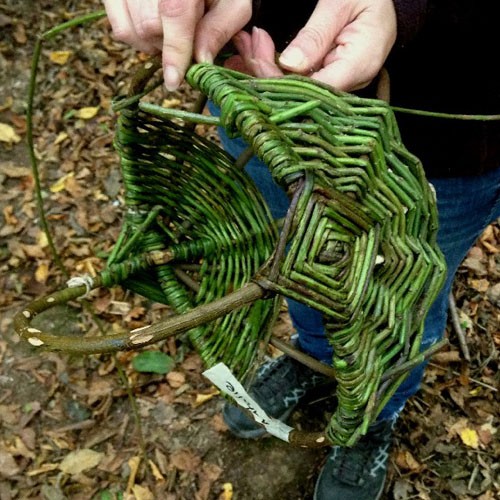 Weaving a basket from brambles
Weaving a basket from brambles
 A sturdy bark basket
A sturdy bark basket
Any memorable moments from a course?
Making grass baskets last year I introduced the students to the idea of burning away the wispy bits of grass on their finished baskets. I invited them to pass their basket through the flames of our campfire. A few were game, and it was really fun (and effective). It’s actually a traditional method, I learned it from a Kishie maker (traditional basket) in the Shetlands.
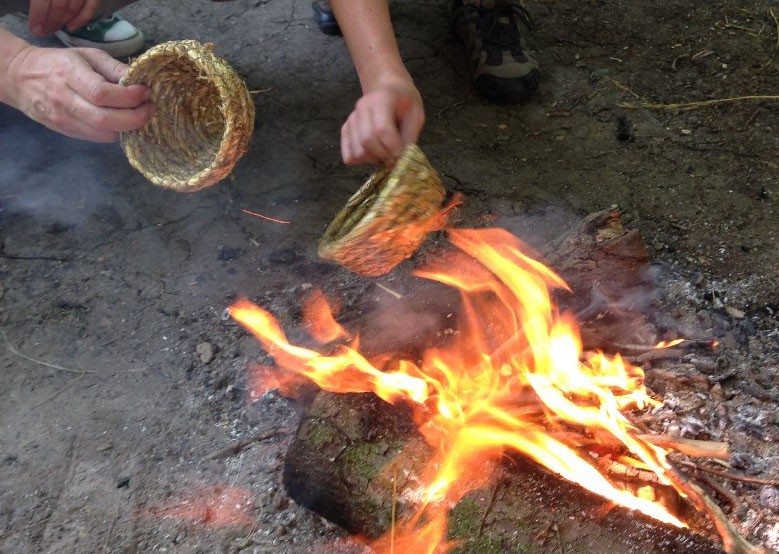
What do you find most interesting about basketry?
I love the fact that baskets can’t be made by machine, only by human hand. So every woven basket you see has been made that way.
Basketmaking techniques are the same now as they were back in Stone Age times, it’s a continuous, and pretty unchanged tradition. But it only takes 2 generations to lose the knowledge, and many basketry related crafts are on the endangered crafts list.
The weave of life… we use that expression because weaving has been so integral to our material lives for millennia… woven baskets to put things in; woven baskets/papooses for our babies; woven clothing to put our bodies in; woven boats to travel in; woven nets to catch our food; woven structures to live in; woven structures to bury our dead in.
Find out more about Native Hands wild craft workshops here, or search for basketry workshops near you, all around the UK.

